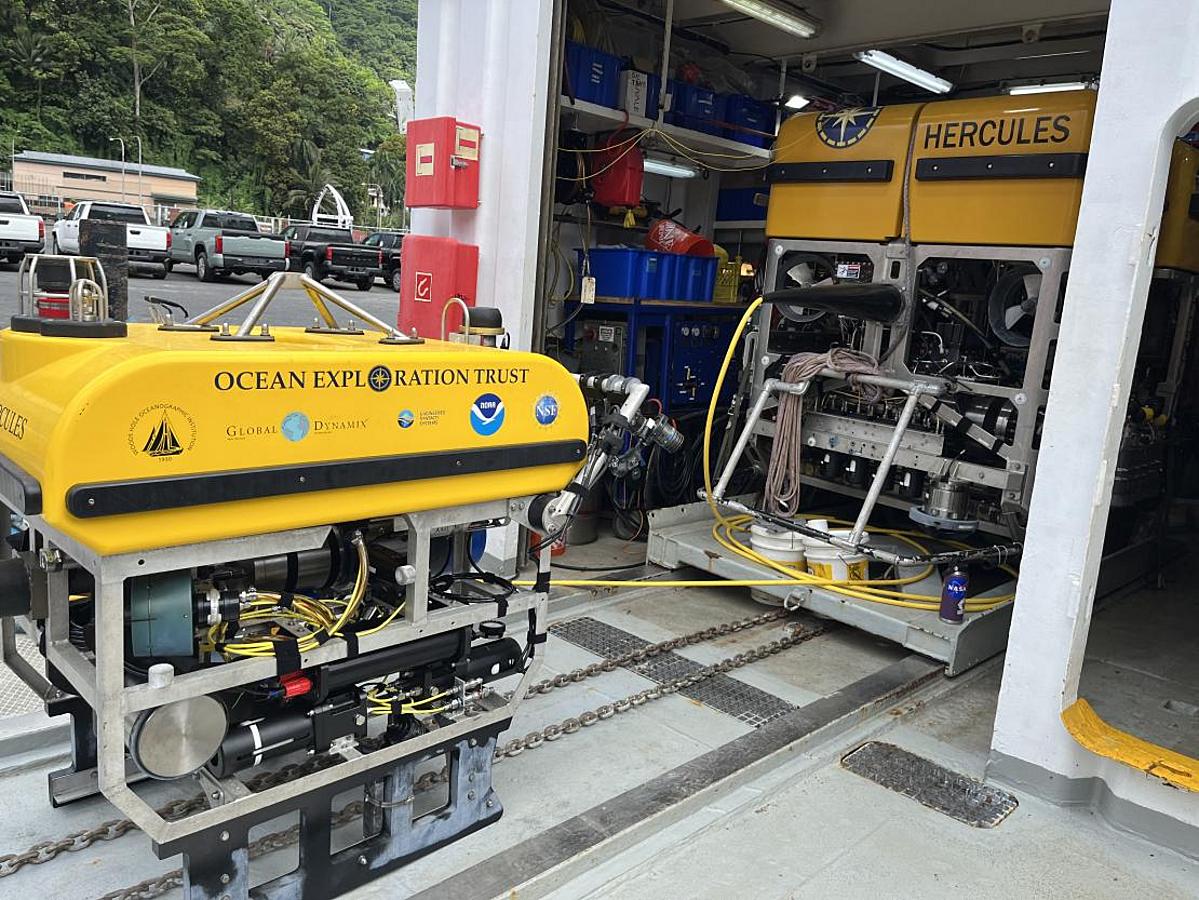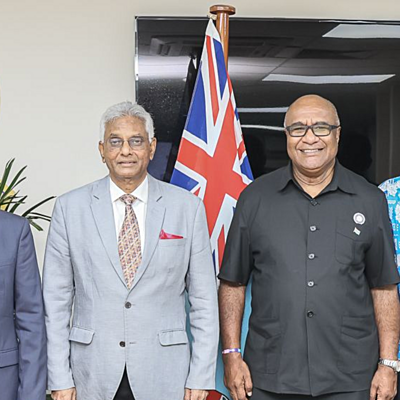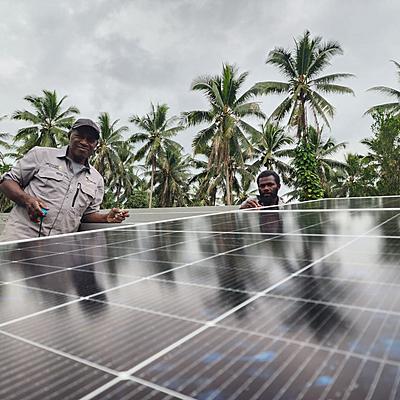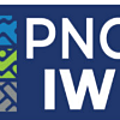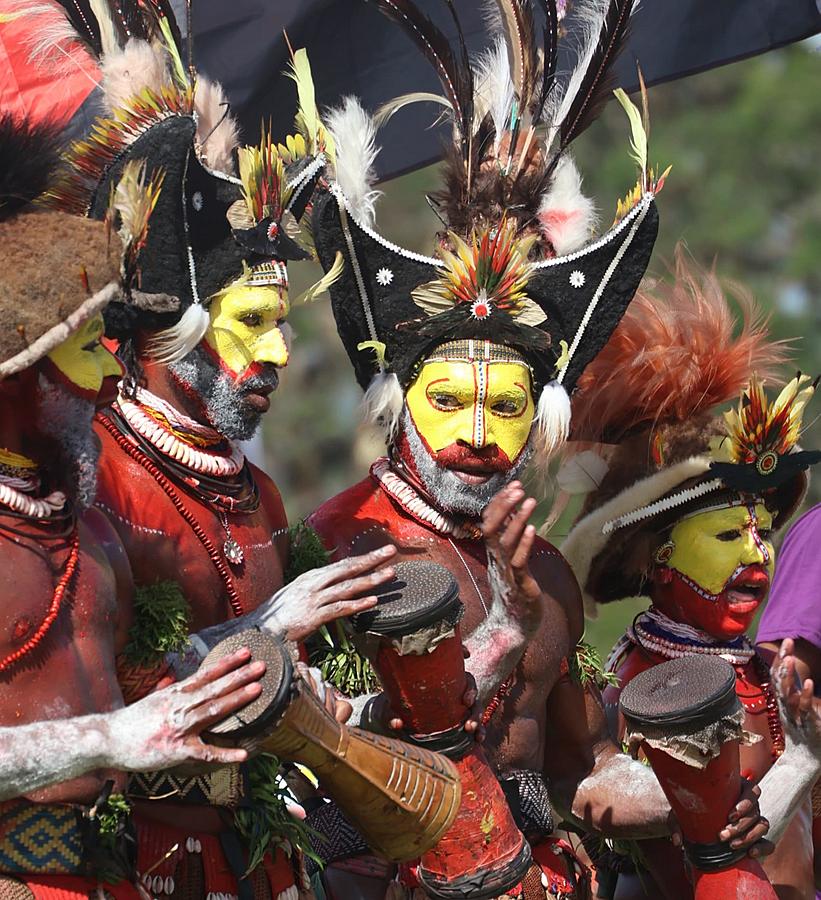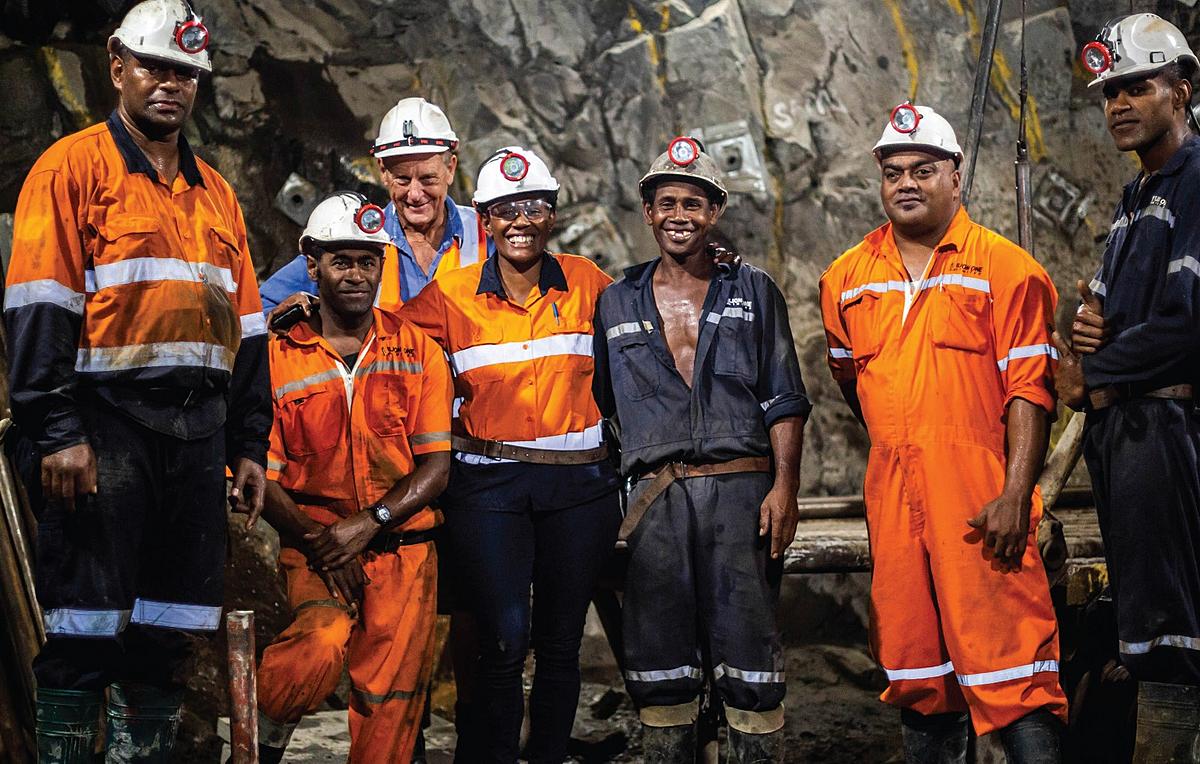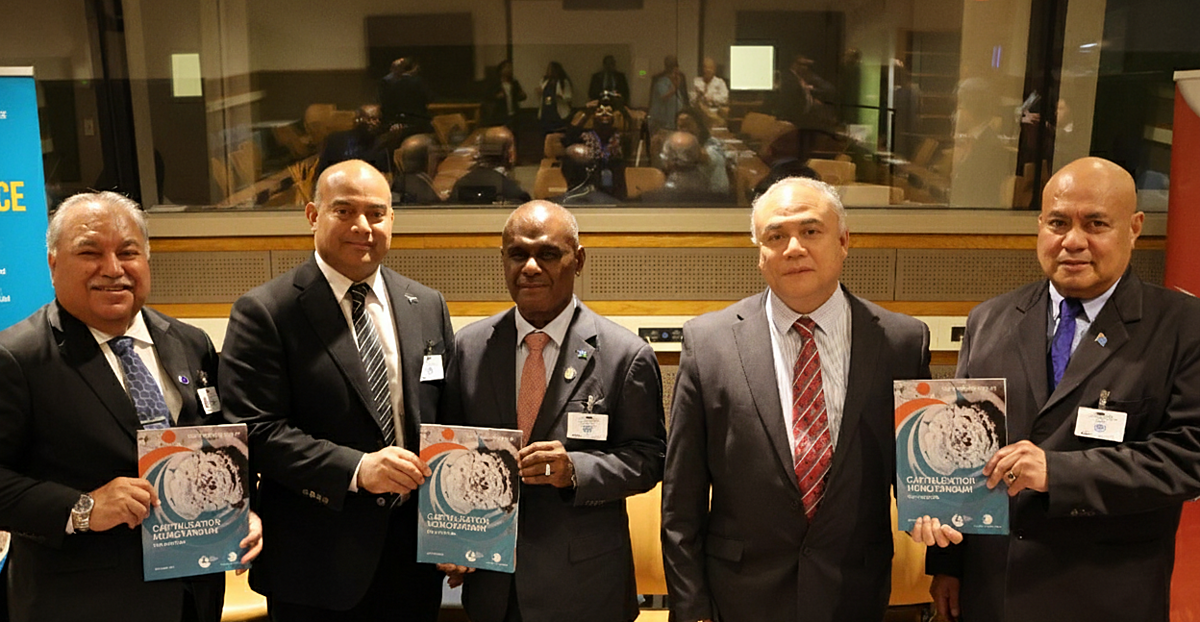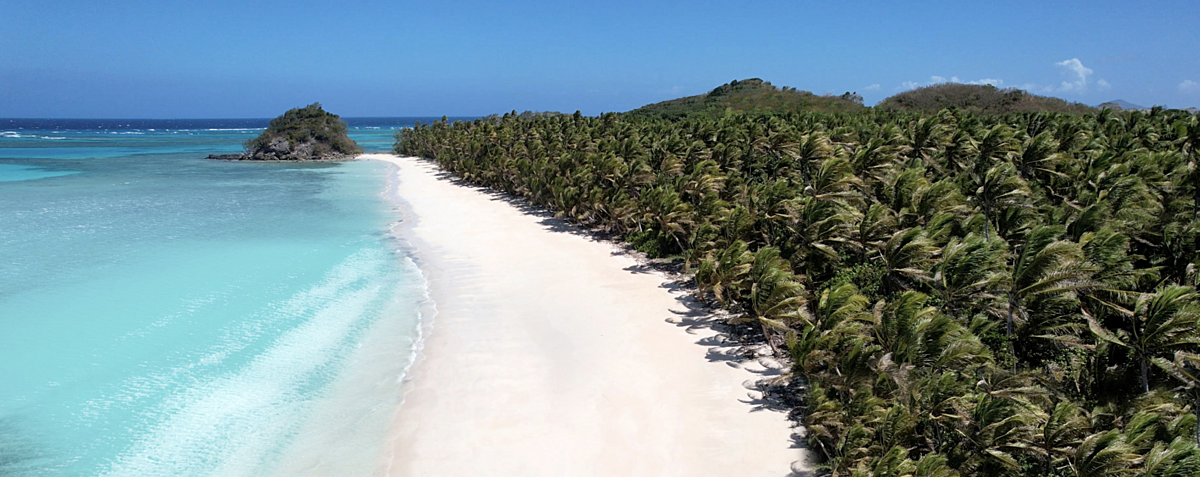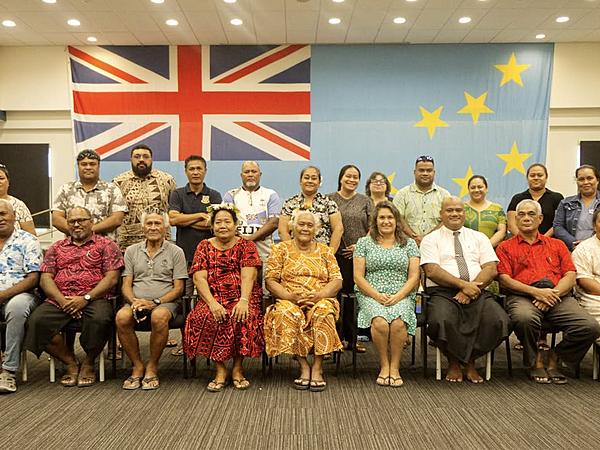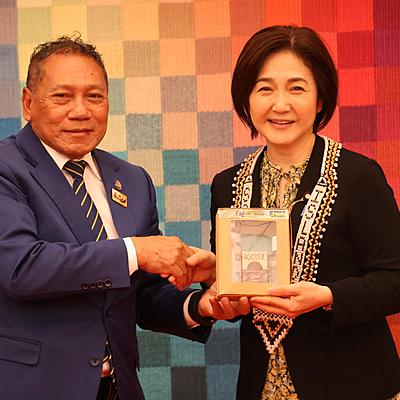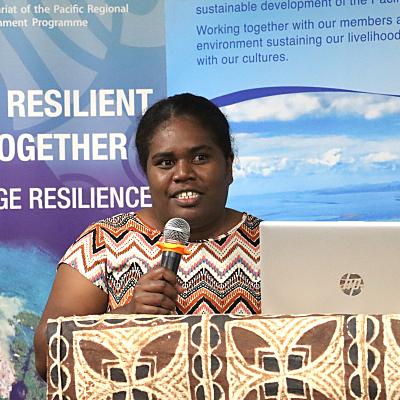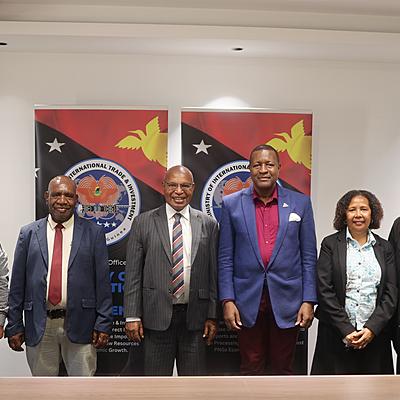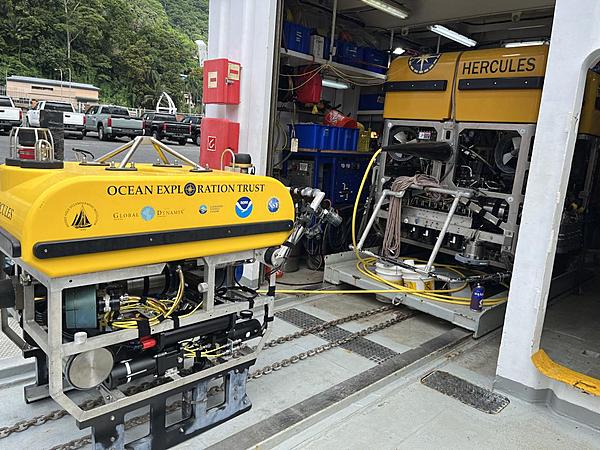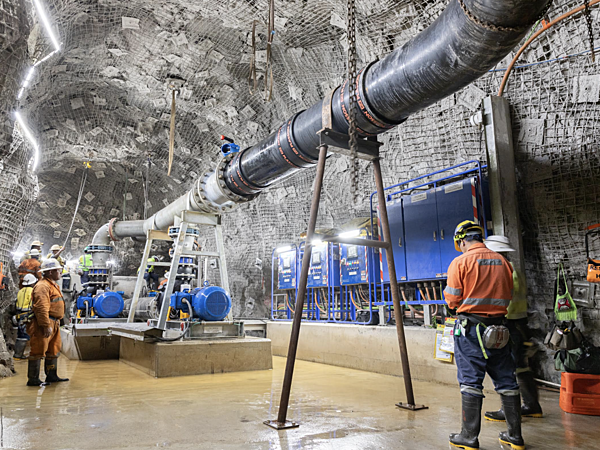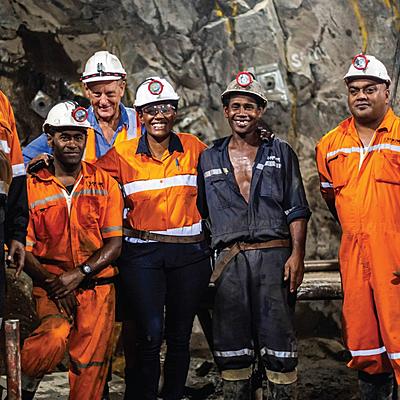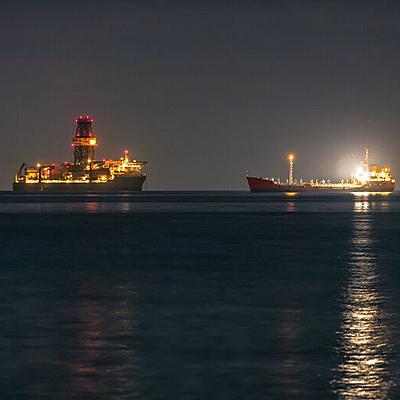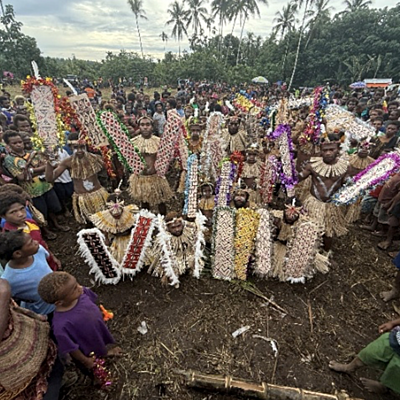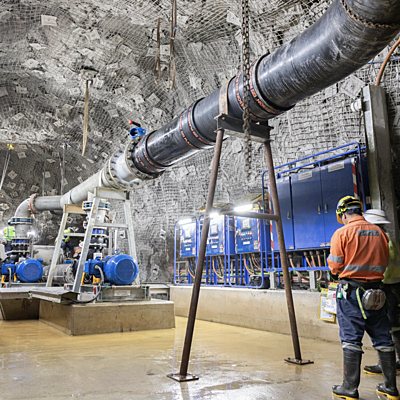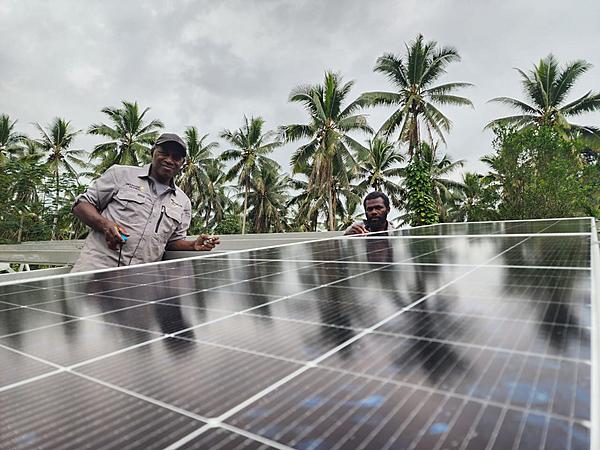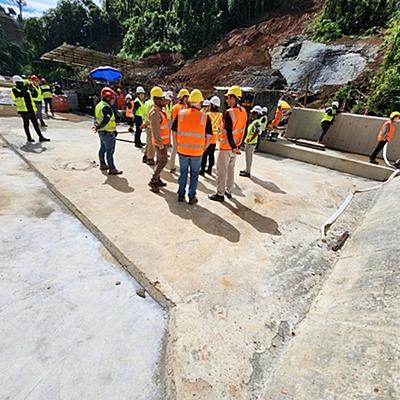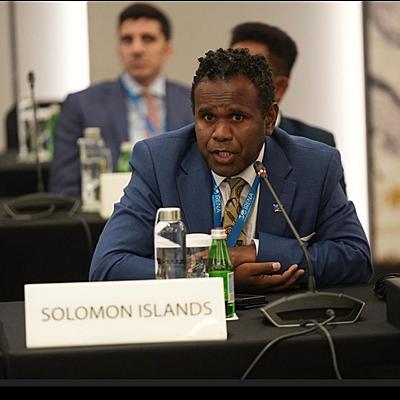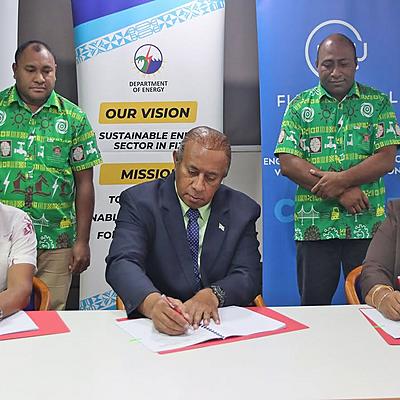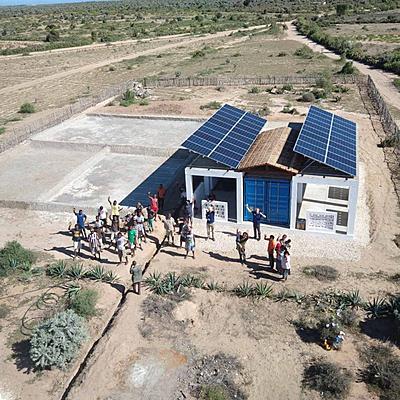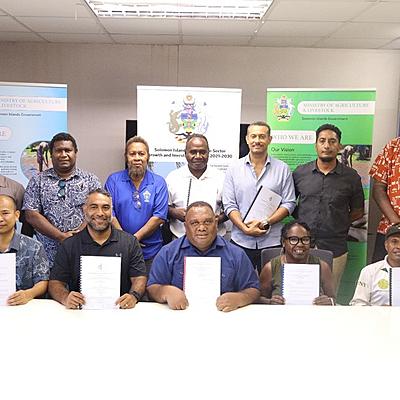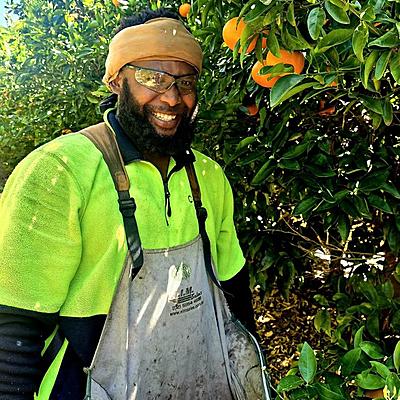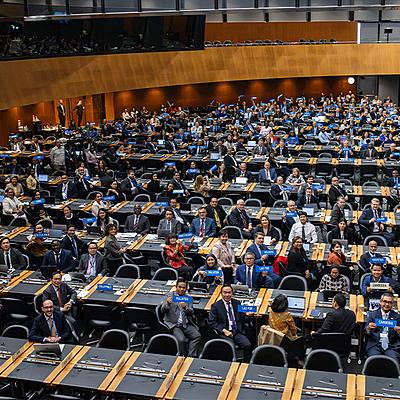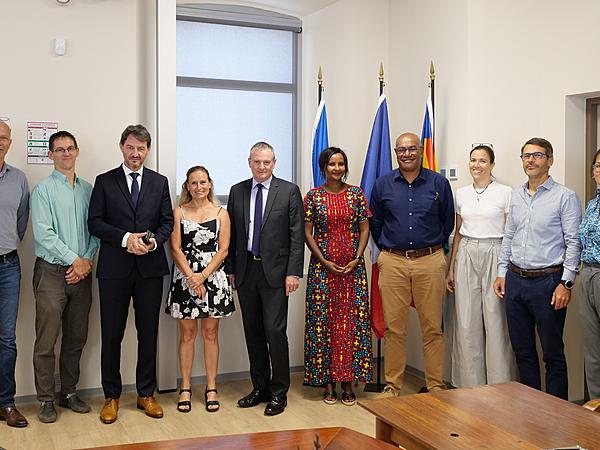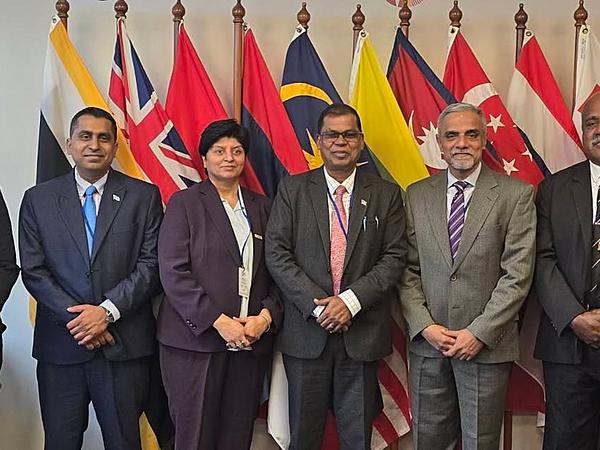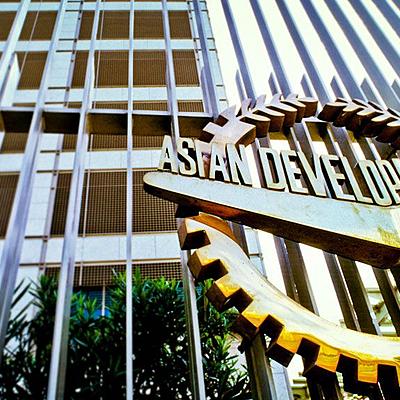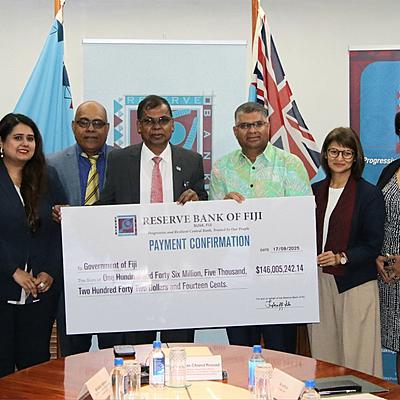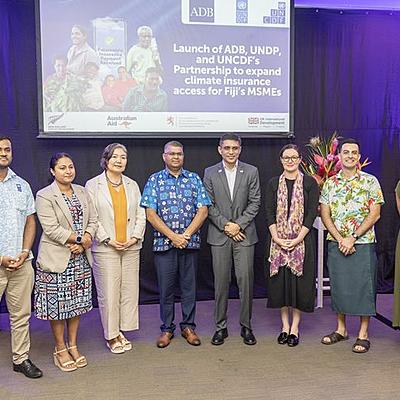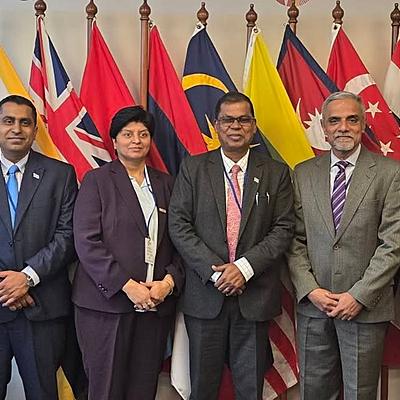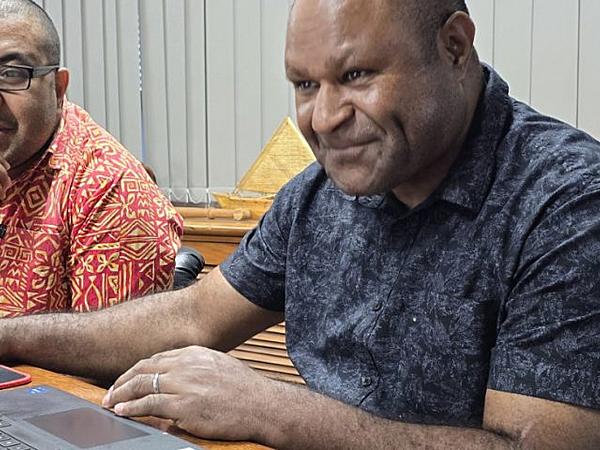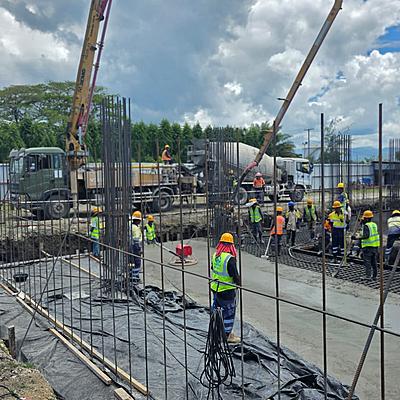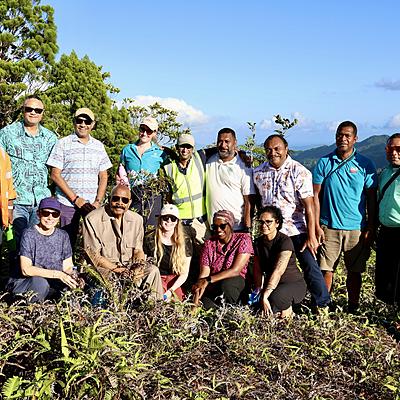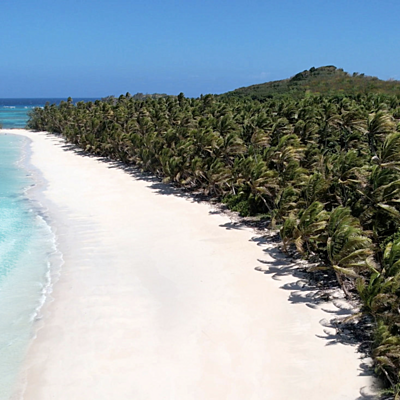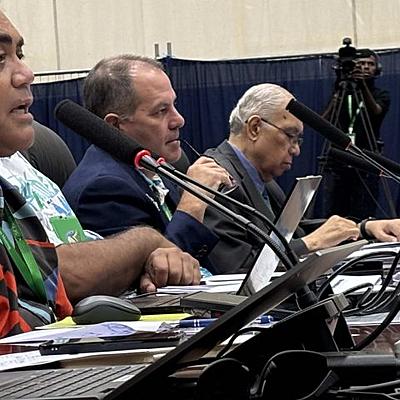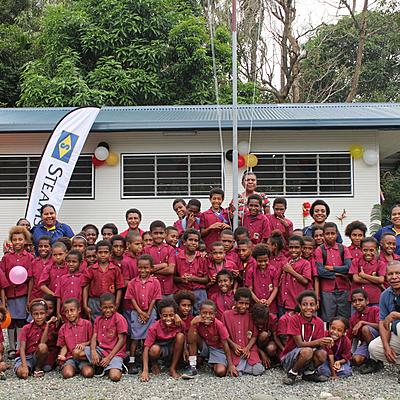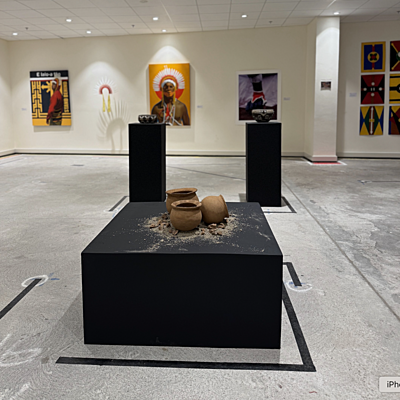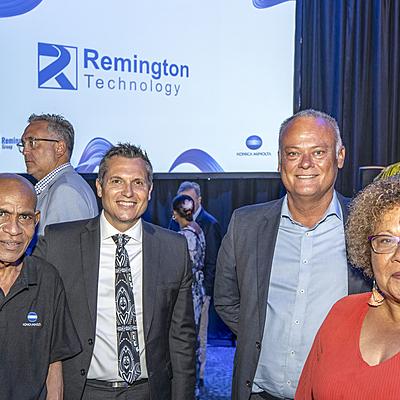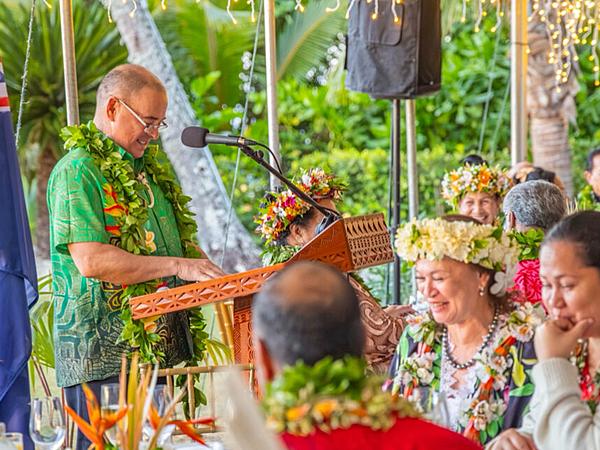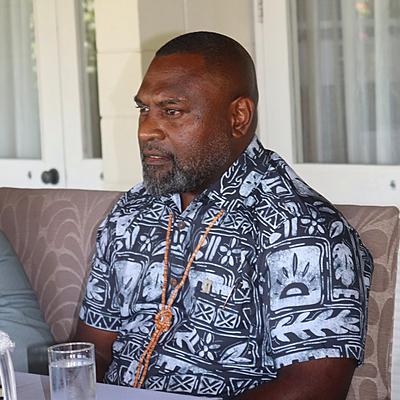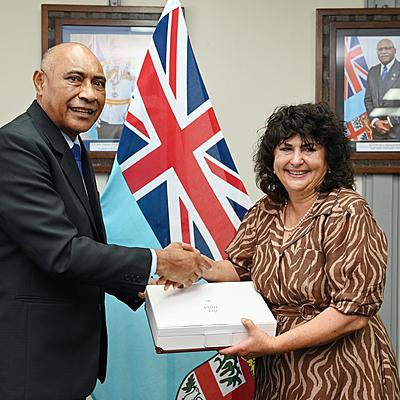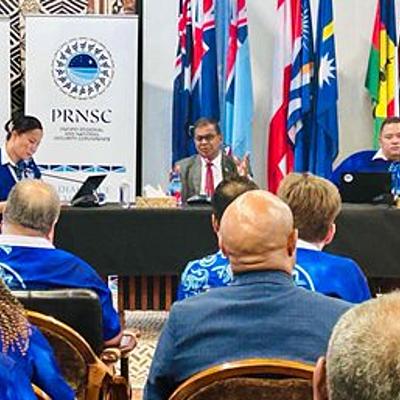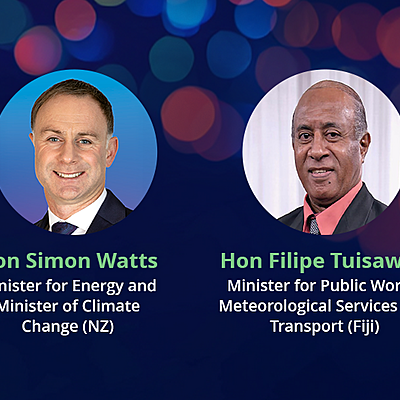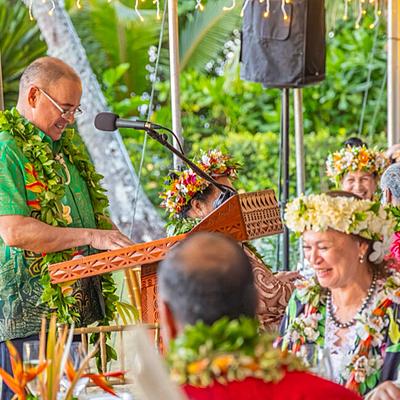Latest News
Trending News
Tuvalu has launched its first-ever Oceans Policy consultations, officially beginning the process to protect and sustainably manage the nation’s marine resources.
In his opening remarks, Secretary in the Office of the Prime Minister Fakasoa Tealei emphasised the deep cultural and economic importance of the ocean to Tuvalu’s way of life.
“Our ocean is not just our boundary — it is our identity, our history, our economy, and our future,” Tealei said.
The consultations, held in Funafuti, are designed to encourage active participation from island communities and to integrate traditional knowledge with modern ocean management practices. The discussions aim to develop a framework for sustainable marine resource governance, ensuring that community voices are at the centre of policymaking.
The two-day consultations are divided between the southern and northern islands. On the first day, representatives from Vaitupu, Nukufetau, Funafuti and Nukulaelae will participate, while the second day will include delegates from the northern islands of Nanumaga, Nanumea, Niutao and Nui.
As Tealei stated, “This policy will be shaped by your voices — your experiences, your concerns, and your ideas.”
He added that the initiative reflects Tuvalu’s determination to safeguard its ocean for future generations. “Together, we aim to ensure a sustainable future where our ocean continues to sustain generations to come,” he said.
According to the Government of Tuvalu, the National Oceans Policy will provide an overarching framework to guide the sustainable use, conservation and management of the country’s vast ocean space and marine resources. It forms part of Tuvalu’s broader commitment under its Te Namo Initiative and aligns with global efforts to achieve Sustainable Development Goal 14 (Life Below Water).
The Government has described the policy as a “critical step” in integrating national priorities on climate resilience, food security and the blue economy, while strengthening coordination among ministries, traditional leaders and local communities.
The Oceans Policy consultations represent a major step toward establishing Tuvalu’s first national framework for ocean governance — one that balances conservation, economic opportunity and the preservation of cultural heritage.
The exploration vessel Nautilus has begun an ambitious deep-sea mission to study the hidden ecosystems of the Cook Islands’ Marae Moana, deploying a groundbreaking 4K camera system that promises to reveal the ocean depths in unprecedented clarity.
For the first time, scientists are testing the MxD SeaCam, an ultra-high-resolution camera developed by DeepSea Power & Light in collaboration with the Monterey Bay Aquarium Research Institute. Encased in a titanium housing, the camera can capture crystal-clear imagery at depths reaching 5,500 metres, where sunlight fades and water pressure is immense.
“This is more than new tech — it’s about seeing Marae Moana in ways never possible before,” the Nautilus team said. “Every image helps our scientists identify deep-sea corals, sponges, and habitats that make our ocean unique.”
The camera is being tested aboard E/V Nautilus using remotely operated vehicles (ROVs) Hercules, Atalanta, and Little Hercules, as the team explores seamounts and abyssal plains across the Cook Islands’ vast marine territory.
Prime Minister Engages Live with Scientists at Sea
Cook Islands Prime Minister Mark Brown, who is the concurrent minister Responsible for Seabed Minerals, joined the expedition team via a live ship-to-shore interaction on Day 16 of the Deep-Sea Habitats of the Cook Islands Expedition (NA176).
Connecting in real time from Rarotonga, Brown spoke with Dr John Parianos and Tanga Morris Jr of the Seabed Minerals Authority (SBMA) Knowledge Management Division, Michael Parrish of the Ministry of Marine Resources, and Dr Antony Vavia.
Together, they discussed life at sea, recent discoveries within Marae Moana, and the importance of building Cook Islands’ capacity in deep-ocean science and stewardship.
Mapping the Unexplored Depths
The Ocean Exploration Trust (OET), with support from NOAA Ocean Exploration through the Ocean Exploration Cooperative Institute, is leading the 21-day mission — the final Nautilus expedition for 2025. The project was developed in close partnership with the Cook Islands Government and the Cook Islands Seabed Minerals Authority, following a formal request for U.S. scientific collaboration.
Located in the South-Central Pacific, the Cook Islands comprise 15 islands surrounded by nearly 2 million square kilometres of ocean — most of it still unmapped and unexplored. This deep-sea region includes vast abyssal plains, plateaus, and seamounts, forming part of Marae Moana, the Cook Islands’ large-scale marine managed area established to balance environmental protection with economic development.
Cutting-Edge Exploration
Aboard E/V Nautilus, the international science team — including six participants from the Cook Islands — will document seabed and biological diversity across the Manihiki Plateau and surrounding abyssal plains. Surveys will use ROV Little Hercules and ROV Atalanta for high-resolution imaging at depths between 4,500 and 5,500 metres, while ROV Hercules will operate at shallower depths of 1,500 to 3,800 metres to collect environmental data and physical samples.
During the expedition, both Hercules and Little Hercules will be equipped with the MxD SeaCam for field testing. The innovative 4K system integrates a Sony HDC-50 broadcast camera and a borosilicate dome, engineered to perform reliably in extreme subsea conditions.
“Collaborations like this showcase E/V Nautilus as a test platform for new technologies,” the OET said, noting that such projects highlight NOAA’s commitment to advancing ocean exploration through public–private partnerships.
Bringing the Ocean to the World
The entire expedition is being streamed live on NautilusLive.org, allowing audiences worldwide to follow the journey in real time. Using telepresence technology, viewers can engage with the crew, ask questions, and gain behind-the-scenes insights via social media and classroom connections.
Free educational Q&A sessions are also being offered to schools across the globe, providing a unique opportunity to interact directly with the scientists and engineers aboard.
This expedition marks the culmination of E/V Nautilus’s 2025 field season, which comprised six missions aimed at strengthening global understanding of the deep ocean. Data from these voyages will contribute to major international initiatives such as Seabed 2030, Beyond the Blue: Illuminating the Pacific, and the U.S. National Strategy for Ocean Mapping, Exploration, and Characterization.
Through open access to all collected data, NOAA and OET hope to build upon decades of deep-sea research — ensuring that the Cook Islands’ Marae Moana continues to inspire both scientific discovery and sustainable stewardship.
REnew Pacific’s Respond Global project reaches halfway point in powering Vanuatu’s remote healthcare
REnew Pacific’s Respond Global project has reached the halfway mark in its mission to power up remote healthcare facilities across Vanuatu, switching on clean energy and water systems at five health facilities in Sanma Province. The upgrades, completed last month, are improving care for the 11,700 people the facilities serve.
The HELPR-1 team completed a challenging month-long deployment in August to electrify and refurbish some of the province’s most remote health centres. New off-grid solar systems were installed at Saramauri Health Centre, Vulesepe Dispensary and Pessena Dispensary, while essential refurbishments restored and extended existing systems at Stonehill and Tasiriki Dispensaries.
The work went beyond energy. Repairs to water, sanitation and hygiene (WASH) facilities were carried out at every site, and Saramauri Health Centre received its first consignment of modern medical equipment, including a patient monitor, oxygen concentrator, defibrillator, autoclave and foetal doppler — giving staff the tools they need to deliver better care.
Two students from the Vanuatu Institute of Technology joined the mission, gaining hands-on experience and contributing to the next generation of Vanuatu’s clean energy workforce.
Delivered in partnership with Vanuatu’s National Green Energy Fund through REnew Pacific, the HELPR-1 Climate Adaptation Programme is working to install 20 new off-grid solar systems and refurbish 20 more across all six provinces. With Sanma now online, the programme is halfway to its goal of benefiting more than 80,000 people in remote communities with cleaner energy, safer water and stronger healthcare.
Australian High Commissioner to Vanuatu Max Willis said: “When health workers have reliable power and safe water, communities are healthier and more resilient. Australia is proud to be working with Respond Global and the Government of Vanuatu to deliver clean, reliable energy where it’s needed most. With HELPR-1 at its halfway point, we are seeing the impact multiply across the islands, transforming healthcare for tens of thousands of people across Vanuatu.”
Dr Ian Norton, Managing Director of Respond Global, said: “We thank Australia for their support for this impactful project, and for the partnership of the Ministry of Health and Department of Energy. We believe everyone deserves access to health services, even in remote and hard-to-reach islands."
"This project means those services now have power, clean water, and, thanks to the Australian Government, extra medical equipment and supplies delivered as part of this REnew Pacific project," Norton added.
REnew Pacific is the Australian Government’s $75 million commitment to expanding clean, reliable off-grid renewable energy in rural and remote Pacific and Timor-Leste communities.
Over the next five years, the programme will fund locally led projects that improve lighting, water, healthcare, education, agriculture and resilient livelihoods. It is part of the Pacific Climate Infrastructure Financing Partnership (PCIFP), a $350 million initiative focused on climate infrastructure in the region, delivered by the Australian Government’s Australian Infrastructure Financing Facility for the Pacific (AIFFP).
Aitken Spence Plantation Managements PLC has announced a landmark agricultural initiative in Fiji aimed at transforming the island nation’s commercial farming sector. The strategic undertaking brings together Sri Lanka’s plantation expertise and Fiji’s agricultural potential, with a focus on modernising farming systems, introducing sustainable agro-technology, and strengthening food security while boosting export growth.
The project follows a successful exploratory mission in 2024, during which an Aitken Spence delegation met with a broad range of Fijian stakeholders including government ministries, cooperatives, plantation operators, farm owners and food processors. Building on this foundation, the company is now securing land in Nawaicoba, Nadi to establish a pilot project that will introduce high-value horticultural and plantation crops such as papaya, pineapples, dragon fruit, berries, mangoes, coffee, tea, cinnamon, lime and passion fruit.
The initiative will combine advanced farming practices with modern processing technologies to create an integrated model for large-scale, sustainable agriculture.
“Fiji presents a wealth of opportunities for commercial farming,” said Dr Rohan Fernando, Board Director of Aitken Spence Plantations. “Our approach is comprehensive, combining innovation, sustainability and strong partnerships, with a focus not only on local consumption but on building export capabilities.”
The initiative has been facilitated by Investment Fiji, with strong support from the Ministry of Agriculture and other national stakeholders.
As one of the country’s key agencies promoting international collaboration, Investment Fiji played a pivotal role in encouraging Aitken Spence Plantation Managements PLC to venture into Fiji’s agricultural sector, connecting expertise and enabling the transfer of modern agricultural technologies to benefit the nation.
Kamal Chetty, Chief Executive Officer of Investment Fiji, underscored the importance of the partnership, noting that Aitken Spence Plantation Managements PLC’s investment is a great accomplishment for Fiji, and it’s a strategic success the agency have been working on since early 2024.
"This project supports the Government’s plan to grow our agriculture sector and achieve economic diversification," Chetty said.
The official also thank the Deputy Prime Minister and Minister for Trade, Co-operatives, MSMEs and Communications Manoa Kamikamica for his support in making the investment possible, starting with his initial conversations to encourage the company to invest in Fiji.
"We are excited about the potential of this investment, especially in how it will lift our rural economy. It will bring new farming technology, create jobs, and offer crucial support to our smallholder farmers by connecting them to new markets. This is how we turn foreign investment into shared prosperity for all Fijians," Chetty said.
Designed with sustainability at its core, the venture will integrate renewable energy solutions to optimise yields, minimise environmental impact, and ensure long-term viability.
The project is expected to not only expand Aitken Spence’s international footprint but also demonstrate how forward-looking partnerships can deliver inclusive growth — linking communities, markets and nations through agriculture.
The Government of New Caledonia has formalised the second phase of its state-guaranteed loan (PGE), following authorisation by the Congress on October 9. The agreement was signed on October 14 by Government President Alcide Ponga, High Commissioner of the Republic Jacques Billant, and the Regional Director of the French Development Agency (AFD) Safia Ibrahim.
Valued at one billion euros, the PGE was first released in March with an initial disbursement of €560 million. The second instalment will be released in two parts:
€219 million to enable the New Caledonian government to manage its financial trajectory through to the end of 2025, with disbursement expected by the end of this week; and
€21 million to support provinces and municipalities facing economic and financial pressures, to be disbursed by the end of November.
President Ponga expressed his gratitude to the French State for its continued support through the AFD.
“The State understood that the situation is very complex. This support is more than necessary to put New Caledonia on a trajectory and to ensure that Caledonian communities do not suffer from the current situation,” he said. “This is the whole point of the Durrieu mission — trying to capture this trajectory and make all stakeholders understand the urgent measures to be taken for New Caledonia.”
The signing was followed by a meeting of the Expanded Working Group of Executive Presidents (GTPE élargi), bringing together the presidents of the government, congress, and provinces, along with representatives from the two associations of mayors in New Caledonia.
This enlarged GTPE aims to define the procedures for allocating part of the loan known as the “Republican Solidarity Endowment”, amounting to €14 million, which will be distributed among local institutions to address pressing social and economic needs.
From 16 to 30 September 2025, the Pacific Tourism Organisation (SPTO) hosted a two-week research training program for the Papua New Guinea Tourism Promotion Authority (PNGTPA), aimed at strengthening PNGTPA’s capacity to manage and deliver high-quality tourism research through the Pacific Tourism Data Initiative (PTDI).
The PTDI program, funded by the New Zealand Ministry of Foreign Affairs and Trade (MFAT), supports tourism data systems across 10 Pacific Island countries — Papua New Guinea, Solomon Islands, Vanuatu, Cook Islands, Samoa, Tonga, Niue, FSM-Yap, Timor-Leste, and Kiribati. Its three core surveys — the International Visitor Survey (IVS), Business Confidence Index (BCI), and Community Attitudes Survey (CAS) — provide evidence-based insights that guide tourism policy, strategic planning, and investment decisions.
To support PNGTPA’s ongoing research efforts, the organisation nominated Tonny Kandata, Research Officer – International, Research & Business Development, to participate in the training. The program was fully funded by PNGTPA and strongly supported by SPTO, with the backing of SPTO Chief Executive Officer Christopher Cocker and Manager, Research & Statistics, Prashil Parkas.
The training began with an overview of PTDI and its three surveys, highlighting their importance in producing reliable tourism data for decision-making. Tonny then reviewed the standard operating procedures for the IVS, BCI, and CAS, followed by core principles of tourism research and survey design — including sampling methods, questionnaire construction, and both qualitative and quantitative approaches.
He gained hands-on experience in survey operations, including cleaning email batches, designing engaging surveys in SurveyMonkey, optimising invitation timing, and assessing when online or face-to-face methods were most appropriate. Tonny also developed skills in preparing exported data for analysis in SPSS and NVivo, before synthesising findings into actionable reports and presentations for stakeholders.
Reflecting on the experience, Kandata shared, "The program has been an invaluable step in strengthening PNGTPA’s capacity to manage our research activities. The training was well-structured, practical, and highly relevant."
Alongside the skills gained, Kandata said the purchase of SPSS and NVivo licences demonstrates PNGTPA’s commitment to building internal capacity.
"I am confident the knowledge gained will strengthen our team and ensure these surveys continue to provide reliable insights for PNG’s tourism sector." he said.
"A special thank you to the SPTO team, especially the research team, for their expertise and guidance, and to our leadership at PNGTPA, whose support made this learning experience both comprehensive and impactful. SPTO’s support — particularly from CEO Christopher Cocker and Manager Prashil Parkas — was invaluable throughout this process," he added.
For his part, Cocker reaffirmed SPTO’s commitment to supporting member countries in building robust, locally led research systems.
“This training exemplifies the power of regional collaboration and capacity-building, ensuring that tourism data continues to inform strategic planning, investment, and sustainable growth across the Pacific," he said.
Cocker also commended PNGTPA’s leadership, particularly CEO Eric Mossman Uvovo and Manager Douglas Keari, for their commitment to strengthening national research systems.
"We’re proud to support PNGTPA in this important capacity-building effort and will continue providing technical guidance as they strengthen their research capabilities," he said.
Weir, a global leader in mining technology, has launched a new range of ENDURON® jaw and cone crushers, developed in close collaboration with customers to address their most pressing operational challenges. This customer-first approach has resulted in equipment that enhances safety, boosts productivity, simplifies maintenance, and supports sustainability goals.
The updated ENDURON® jaw crushers now feature a redesigned Hydraulic Power Unit (HPU), which allows for true push-button control of CSS adjustments. This innovation eliminates the need for manual intervention, significantly reducing safety risks for operators and maintenance teams. The new HPU also ensures consistent tensioning of the retraction springs at all times, improving reliability and ease of use across the full wear range of the jaw dies. The optimised motor power and oil tank capacity reduce the HPU’s CO₂ footprint and environmental impact.
To further improve performance and reduce downtime, the entire range of ENDURON® jaw crushers now includes ESCO® wear parts. These components have been rigorously tested and proven to extend wear life, which means fewer maintenance interventions and increased equipment utilisation—translating to lower operating costs and more efficient production.
The upgraded ENDURON® cone crushers also benefit from ESCO® wear liners and a newly designed Hydraulic and Lubrication Power Unit (H/LPU). This compact, plug-and-play system reduces the environmental footprint and simplifies installation, making it ideal for sites looking to streamline setup and minimise impact. Additionally, the automation platform across all cone crusher models has been enhanced to ensure consistent and reliable crushing operations. With IO-Link digital sensors and Siemens PLC hardware, customers can expect seamless integration, easier troubleshooting, and intuitive control through a new Human-Machine Interface (HMI), which simplifies servicing and improves operational efficiency.
Weir’s new crusher range includes the ENDURON® ET jaw crushers, as well as both the EP fixed-shaft and EC live-shaft cone crushers, offering tailored solutions to meet the specific needs of each site and application. This flexibility ensures that customers can select the ideal equipment for their unique operational requirements.
As mining operations increasingly focus on sustainability and energy efficiency, Weir’s new ENDURON® crushers are designed to support this transition. By complementing the existing ENDURON® screens and HPGRs, the new crushers enable customers to build fully integrated flowsheets that reduce energy consumption and improve overall performance.
Magnus Skorvald, Global Product Manager – Crushers at Weir, emphasised the importance of customer feedback in shaping the new range. “We’ve listened closely to our customers and designed this range to meet their evolving needs. From safety and sustainability to ease of installation and maintenance, every feature is built to deliver real value on site.”
Whether upgrading existing equipment or planning a new installation, the ENDURON® range of comminution products is built to help customers operate smarter, safer, and more sustainably.
Founded in 1871, The Weir Group PLC is one of the world’s leading engineering businesses with a purpose to make its mining and infrastructure customers’ operations more sustainable and efficient. Weir’s highly engineered technology enables critical resources to be produced using less energy, water, and waste while reducing customers’ total cost of ownership.
Weir is ideally positioned to benefit from structural trends that support long-term demand for its technology, including the need for more essential metals to support economic development and carbon transition. The Group has approximately 12,000 employees operating in more than 50 countries, with a presence in every major mining region of the world. Find out more at www.global.weir.
Papua New Guinea’s 50th Independence Anniversary, celebrated from 14 to 19 September, brought the nation to the world stage as global leaders, regional partners and international dignitaries joined in commemorating the Golden Jubilee.
From Independence Hill to the streets of Port Moresby, the celebrations on 15 and 16 September showcased the unity of “One People, One Country, One Future” while highlighting the country’s growing role in the Pacific and the global economy.
Global Leaders Gather in Port Moresby
The capital city became the gateway for world leaders and Pacific dignitaries who converged to witness Papua New Guinea’s milestone anniversary. United States Deputy Secretary of State Christopher Landau and Commander of the U.S. Indo-Pacific Command Admiral Samuel J. Paparo joined U.S. Ambassador Ann Marie Yastishock, PNG Foreign Secretary Elias Wohengu, Solomon Islands Prime Minister Jeremiah Manele and Pacific Islands Forum (PIF) Secretary General Baron Waqa for a U.S.–Pacific Islands Forum Roundtable in Port Moresby.
The discussions focused on shared priorities including economic development, disaster preparedness and regional security. The visit also saw the United States and Papua New Guinea strengthen bilateral ties with the signing of a Framework for Strategic Engagement, alongside the groundbreaking of a K1.6 billion U.S.-funded fuel storage facility, marking a significant investment in PNG’s energy security and economic future.
“From strengthening our shared interests to dancing alongside Papua New Guineans to Wan Kantri, the U.S. is committed to its partnership with Papua New Guinea and the Pacific,” Deputy Secretary Landau said during the events.
UN Secretary-General, who visited PNG and addressed Parliament on Tuesday, 2 September 2025, congratulated PNG on achieving 50 years of unbroken democracy.
Israeli President Isaac Herzog delivered his message on behalf of his people via video. He said it was a true privilege to share his congratulations with Prime Minister Marape and the people of PNG on 50 years of Independence.
At the bilateral meetings on Monday, 15 September 2025 to Wednesday, 17 September 2025, all visiting leaders congratulated PNG on its historic milestone:
China: Special Envoy of the Chinese President and Minister for Ecology and Environment Huang Runqiu delivered a personal letter of congratulations from President Xi Jinping to Prime Minister Marape.
United States: Deputy Secretary of State Christopher Landau congratulated Prime Minister Marape and the people of Papua New Guinea on achieving 50 years of democracy and for maintaining a relationship with the USA based on similar ideals of democracy, Christianity and mutual goals.
Japan: Special Envoy of the Japanese Prime Minister and Minister for Foreign Affairs Takuma Miyaji delivered a personal letter of congratulations from the Japanese Prime Minister.
Indonesia: Vice President Gibran Rakabuming Raka passed on President Subianto’s congratulatory message on behalf of Indonesia.
France: French Representative for the Pacific Veronique Roger-Lacan delivered President Emmanuel Macron’s personal congratulatory message to PM Marape and the people of PNG on reaching the 50-year independence milestone.
India: Minister for State for External Affairs and Minister for Textiles Pabitra Margherita congratulated PNG on its achievement as a sovereign nation.
Australia: Prime Minister Anthony Albanese, joined by Deputy Prime Minister Richard Marles, expressed to PM Marape Australia’s most heartfelt message of congratulations and well-wishes as the country that granted PNG its independence in 1975.
Congratulatory messages also came from Pacific Islands Forum leaders who arrived from the Solomon Islands after the 54th PIF Leaders Meeting. They included the President of the Federated States of Micronesia Wesley Simina, President of Palau Surangel Whipps Jr., Prime Minister of Niue Dalton Tagelagi, Prime Minister of Tuvalu Feleti Teo, Prime Minister of Cook Islands Mark Brown, Prime Minister of Solomon Islands Jeremiah Manele, Deputy Prime Minister of Vanuatu Johnny Koanapo Rasou and Deputy Prime Minister of Fiji Manoa Kamikamica.
President of the Asian Development Bank Masato Kanda, who also met with Prime Minister Marape and later with the PIF leaders, congratulated the people of PNG on achieving its Golden Jubilee.
Pacific Islands Forum Affirms Solidarity
Pacific Islands Forum Secretary General Baron Divavesi Waqa joined the celebrations on behalf of the Blue Pacific family, underscoring PNG’s central role in the regional bloc since joining in 1974.
“On behalf of the Forum Family, we extend our warmest congratulations to the Government and the people of Papua New Guinea on this significant milestone. We wish Papua New Guinea continued peace, prosperity and unity as it looks with confidence to the next 50 years and beyond,” Waqa said.
Royal Visit: Duke of Edinburgh Reintroduces Youth Award
Adding to the prestige of the celebrations, His Royal Highness Prince Edward, Duke of Edinburgh, visited PNG and announced the reintroduction of the Duke of Edinburgh International Award in Port Moresby. The ceremony, attended by Governor General Sir Bob Dadae, Prime Minister James Marape, Foreign Affairs Minister Justin Tkachenko and UK High Commissioner H.E. Anne Macro, took place at the Airways Hotel.
The non-formal education programme will provide young Papua New Guineans aged 14–24 with opportunities to build resilience, leadership, teamwork and community engagement. Successful participants will gain internationally recognised certificates, boosting career and education prospects while encouraging personal growth and social responsibility.
“This award will empower the next generation of Papua New Guineans to take ownership of their futures while building lifelong friendships and networks,” Prince Edward said.
Port Moresby: The Stage of PNG50
Hosting thousands of visitors, Port Moresby stood tall as the gateway to Papua New Guinea as the capital city became a showcase of PNG’s more than 10,000 tribes and 22 provinces, bringing together cultural performances, music, arts and food in a safe, vibrant and family-friendly environment.
The National Capital District Governor Hon. Powes Parkop hailed the celebrations as a turning point in reshaping the narrative of the capital.
“I am proud of the people of Port Moresby for turning up in record numbers and for conducting themselves with discipline and pride throughout the PNG50 Independence celebrations,” Governor Parkop said. “These events showcased our unity and sent a powerful message to the nation and the world that Port Moresby is a modern international city.”
He highlighted the year-long build-up of events at the beginning of this year, from the Anniversary Launch in February, Pacific and Asian story celebrations, the PNG Story in July, the Meganesia Concert and the Amazing Port Moresby festivals in September, which all built momentum towards the Golden Jubilee.
Beyond the capital, it was also a peak week for tourism, as thousands of visitors travelled to provinces across the Highlands, Islands, Momase and Southern regions to celebrate 50 years of independence. From cultural shows in Goroka and Mt. Hagen, East Sepik and Central Province, Hula canoe races to the Mask Festivals held in the island and Momase regions, to traditional dances in East New Britain, Milne Bay and Manus, the Golden Jubilee sparked nationwide festivities that brought economic opportunities to local communities while showcasing the beauty and diversity of PNG to the world.
Economic Impact: SMEs and Creative Industries Thrive
The celebrations lifted national pride and also provided important economic opportunities. Hundreds of small and medium enterprises (SMEs) showcased and sold products ranging from arts and crafts to food and cultural items in Port Moresby and other venues. Local artists, traditional troupes, musicians, choreographers and media houses also gained income and visibility from their participation.
Port Moresby was entertained by international artist Akon on 17 September, including musicians, bands and artists from Vanuatu, Solomon Islands, Torres Strait Islands and Indigenous Australia.
“This is economic empowerment in action,” Parkop emphasised. “Our SMEs are not only earning income but also gaining the confidence and visibility to grow their businesses in front of a national and international audience.”
PNG Looks Ahead to Another 50 Years
With incident-free celebrations, full participation from international partners and renewed confidence in the capital city’s ability to host world-class events, Papua New Guinea’s 50th Independence Anniversary has set a strong foundation for the next half-century.
Prime Minister James Marape, who led the national flag-raising ceremony alongside thousands of students, teachers and citizens on Independence Hill, said the Golden Jubilee was not just about reflecting on the past but about inspiring the next 50 years.
Speaking after the Jubilee, Prime Minister Marape said the milestone was a reminder to all Papua New Guineans that the country’s future must rise above tribal, provincial and personal interests.
“As we come out of our 50th anniversary, the country is still united under one flag. For me, James Marape, my commitment to Papua New Guinea will always rise above my commitment to tribe, district or province. Our nation must always come first,” Prime Minister Marape said.
He further highlighted that stability in Hela, Enga and Southern Highlands is vital, not only for communities but also for the protection of nationally significant resource projects.
“Projects such as Porgera and the PNG LNG, which today contribute billions to our economy, cannot be sabotaged. In the last three years alone, PNG LNG has contributed over K10 billion to our budgets. These projects must be safeguarded for the benefit of all our people,” PM Marape said.
The Prime Minister revealed that work is underway with development partners and investors to open alternative roads in project areas, including routes between Mendi, Margarima, Tari and Kikori.
“We are mobilising resources through Tax Credit Projects to ensure these vital roads are opened up. This is about connecting our people, securing investment and guaranteeing the free flow of services and opportunities,” he added.
PM Marape underscored that as the country enters its next 50 years, the focus must be on peace, development and unity.
“The 50th anniversary calls us to rise above self and tribal interests and to put our country first. We are in the 21st century. If someone feels aggrieved, the courts are there—not tribal lawlessness. This is the mindset that will carry us forward into the next 50 years,” he affirmed.
As the curtains close on the historic celebrations, PNG has shown the world its diversity and potential as a young nation confident in its future and proud of its journey.

